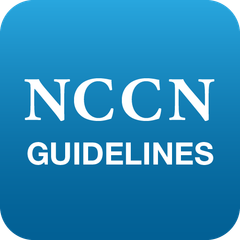
Considerations Related to Development of PV-Related NCCN Treatment Guidelines
Dr Gerds reviews the process for updating NCCN guidelines surrounding PV treatment.
Episodes in this series

Aaron Gerds, MD, MS: The NCCN [National Comprehensive Care Network] guidelines for the polyphony of plasmas and all diseases, for that matter, is a certainly a collaborative process. There is a panel chair and cochair who organizes the information and sets the agendas. But input is from all centers and from all panel members. Every entity and member institution elect a member to the panel, and everybody gets a vote on the guidelines on whether to accept certain language within the guidelines or reject it or modify it. And every year there is a call to the NCCN centers to give input into the guidelines for suggested updates. So every panel member within their own institution will say, “Hey, everybody who takes care of polycythemia vera [PV] patients, are there any updates we should make to the guidelines?” And then so they can get an institutional perspective, feed that up into the panel. Then at our annual big update we go through each of these recommendations that come from the individual centers, and certainly there are controversial things that can be presented or some stuff that’s completely new. So we often have subcommittees break down this data in a more refined manner and present it to the group in a whole so we can make the most educated and most informed choices when putting together the guidelines. This all happens in concert with superb support from NCCN in both to an administrative fashion, as well as pulling in the papers, organizing all the information, and putting it into those fancy algorithms that you see in those PDFs. It’s a huge effort from panel members, which are all volunteer positions, as well as the NCCN staff, to put these guidelines together and keep them up to date.
The big one is the annual updates that we do every year on the guidelines. But the things that can prompt on-the-fly updates are certainly new drug approvals within that space. Again, the most recent example for policy setting overall was the approval of ropeginterferon, which prompted us to update the guidelines to include that agent. Certainly, [with] withdrawal of any agents [from] the market, we would go and update the guidelines. And, lastly, large impactful results being presented or published. For example, if a new trial with a drug that’s already approved comes out suggesting a new way to treat a disease, we would certainly update our guidelines based on that or, certainly, head-to-head type studies. Again, another example of that was the publication of the MAJIC-PV trial, which further bolstered the evidence for the use of ruxolitinib in patients with high-sodium polycythemia vera with an improved event-free survival. So that was very important to update that within the guidelines in a very timely manner.
The major updates in the NCCN guidelines for 2023 focused on a couple of different areas. Of course, there are a lot of grammar fixes and organizational fixes to try to make the flow of the guidelines a little bit better, easier to read, easier to comprehend. And there were several updates in the more granular sections where we’re going over some of the [things to] include the diagnostic criteria, high-risk mutations and the like. But the big things we’re really thinking about [are] interferons, and how important of a role they have in the treatment of polycythemia vera. We tried to use the published randomized, controlled data to derive recommendations for the use of interferons. Interferons are somewhat of a hot topic in polycythemia vera. They certainly have their proponents and their detractors. And I think some of the appeal with an interferon is [that] out of the agents that we use to treat PV, it’s the one that has clearly led to some very deep responses and very deep remissions. In fact, roughly 10% of patients treated with an interferon can go into what is known as a molecular remission, meaning that the JAK2 mutation is no longer detectable. And we think this is a really important thing for those patients. Moreover, there’s data that’s emerging suggesting that patients who have been in hematologic remission for at least 2 years could potentially go through a drug holiday akin to what we do with TKIs [tyrosine kinase inhibitors] in CML [chronic myeloid leukemia]. So I think the evolution and the continued look at how interferons are an important piece of the treatment of PV have influenced some of the changes that we made to the guidelines. We [looked] closely at both low risk and high risk and how can interferons be applied in those populations? I think this year too, with the NCCN guidelines, we really put an emphasis on enrolling patients in clinical trials. We’re trying to move clinical trials to the top of the list because by no means [are] any of these agents that we have available perfect, and we want to encourage patients to enroll or at least consider clinical trials when they do need treatment for their polycythemia vera. That way we can do better to develop new and better treatments for them.
The NCCN’s guidelines for MPN [myeloproliferative neoplasms]…focused on a patient perspective in a natural, very natural way. So the MPNs, including polycythemia vera, are known for being symptomatic diseases. I know we spend a lot of time talking about asymptomatic disease.... But, certainly this is a disease of symptoms, whether we’re talking night sweats, fevers, itchy skin ,and enlarged spleen, these things can all lead to reductions in quality of life. In fact, one of the key tenets of measuring success of a new drug in the MPN field is reduction of the total symptom score, or TSS. So by nature, these diseases are very patient centric.…So that is a key piece of the way the guidelines are designed. Talking to patients, understanding their symptoms. And then when you start a therapy, measuring how much a patient’s symptoms improve. So that is really a key piece of that, that interaction, the key piece of treating patients with polycythemia vera. Secondly, especially in the low-risk category, we think about shared decision-making when we talk about different agents to choose for treating polycythemia vera. We need to lower those counts with a medication as opposed to phlebotomy alone, whether we’re choosing between hydroxyurea or interferons, and the risks and benefits, the pluses and minuses of each of those. To me, certainly when considering cytoreduction, first-line cytoreduction in patients with polycythemia vera, hydroxyurea and interferons are choices 1 and 1A. It’s a shared decision-making point with the patient, which direction to go first. So we tried to make that abundantly clear in the guidelines as well.
Transcript is AI-generated and edited for clarity and readability.
Newsletter
Stay ahead of policy, cost, and value—subscribe to AJMC for expert insights at the intersection of clinical care and health economics.











































